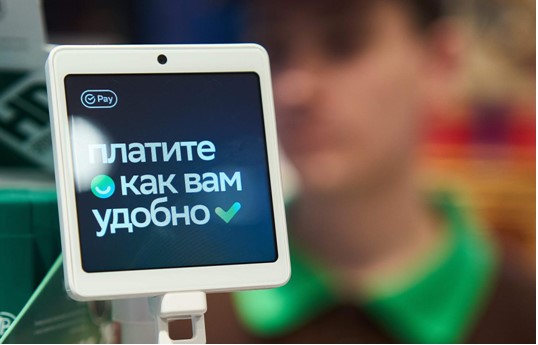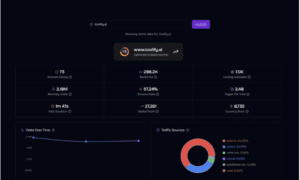The “Smile to Pay” biometric payment service developed by Sberbank, Russia’s largest bank, has received worldwide recognition after an American blogger posted a video of herself using the technology.
A video showing American blogger Sasha (@sashameetsrus) paying for a purchase in a small Moscow café using only her smile went viral. Instead of reaching for her wallet or phone, she simply smiled at the payment terminal’s camera. Within a second, the payment was confirmed. The video of this moment quickly gained millions of views and thousands of comments from amazed viewers around the world.
The number of Sberbank payment terminals equipped with biometric payment functions has now exceeded one million across the country, making Russia’s system one of the largest in the world.
How “Smile to Pay” Works
The “Smile to Pay” is a biometric payment service developed by Russia’s largest bank Sberbank. The bank has invested heavily in creating an independent ecosystem for biometric transactions. Launched in 2023, the service allows customers to pay for purchases at store checkouts using facial recognition technology.
To complete a payment, users simply look into a camera that scans their face and matches it with a unique number linked to their biometric data. This number is also connected to the user’s bank card account. If the data matches, the payment is instantly approved.
The system also uses Liveness technology, which verifies that the face being scanned is real and not a photo or mask. It analyzes facial features that cannot be faked and creates a unique digital profile. If multiple faces are detected in the frame, the payment will be declined. The technology is also designed to recognize users despite changes in hairstyle, makeup, or headwear.
The entire process takes just a few seconds, comparable in speed to a bank card transaction, and eliminates the need to carry a physical card or smartphone.
Biometric Payments Gain Widespread Adoption
In Q1 2025, Russians made over 37.5 million biometric payments totaling nearly 30 billion rubles. This number already surpasses the total number of such transactions in 2024, highlighting the rapid growth in popularity of the service.
“Russia is one of the early adopters of biometric payments, with the technology gaining widespread use,” says Dmitry Malykh, Senior Vice President and Head of Transaction Banking at Sberbank.
“The results show a shift from the early stages of innovation towards broad acceptance, from the initial adopters to the mainstream. Typically, it takes 3-4 years for such technologies to gain full traction, but we introduced ‘Smile to Pay’ in the summer of 2023.”
Major cities like Moscow and Saint Petersburg lead in adoption, but technology is also rapidly expanding across other regions.
Global Experience and Technology Development
The viral video of an American blogger using “Smile to Pay” is just one example of the international attention the technology has attracted. Media outlets in the Czech Republic and Poland have also covered the service, highlighting it as a striking example of technological innovation.
Facial recognition technology is being actively developed in both the United States and China, though the adoption of biometric payment systems in these countries remains limited compared to Russia. In the USA, regulatory frameworks and privacy considerations have slowed the widespread implementation of such systems. In China, while facial recognition is commonly used for security, payment methods often rely on QR codes and mobile apps.
Against this global backdrop, Russia’s biometric payment system stands out as a unique example of successful innovation and adaptation. In 2025, plans are underway to continue expanding biometric payments nationwide and to create a unified cross-bank bio-acquiring system, allowing customers of any bank to pay with their face at participating terminals.



































